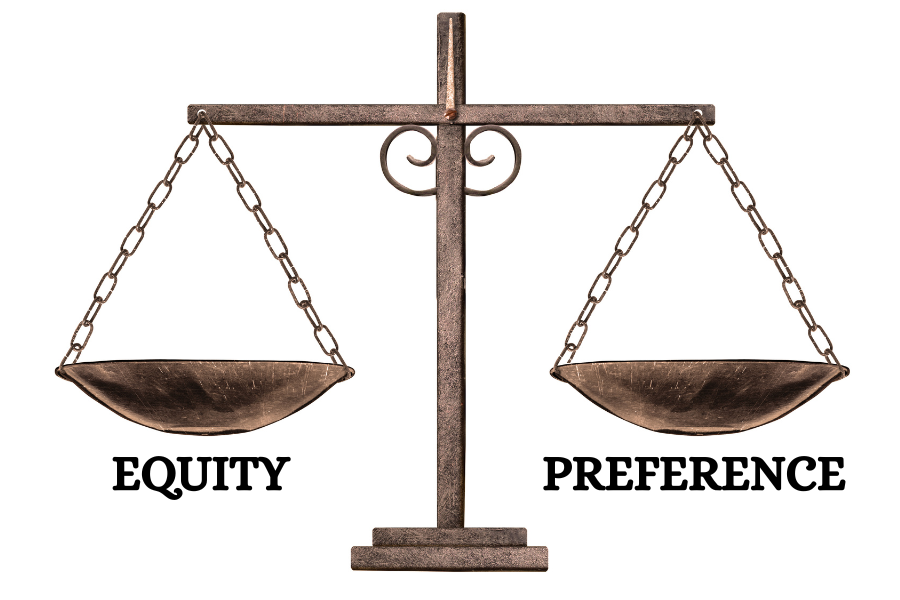Table of Contents
Analysing a company's finances before picking stocks is crucial, whether listed or unlisted share trading. This includes gauging into financial records of the company to ensure if the stocks are investment-worthy or not. Financial ratios can be crucial for any investor analysing a company before investing. Different ratios are used by investors, financial institutions, and professional analysts to plan their investments.
If you are not a financial wiz, we have described six basic financial ratios that every investor should know before investing. In this writeup, we will look at each financial ratio and essential explanations. Keep reading on to get insights orconnect with an expert broker right away!
What are financial ratios?
Financial ratios are made of those complex math problems you might have overlooked in your school. However, when it comes to investing, you would love them because they can save you valuable time and make you a more informed investor.
Financial ratios are created using numerical values from financial statements/records to gain insightful information. You can take these numbers from a company's financial records such as - balance sheet, income statement, cash flow statement, etc. You can further use this data to perform quantitative analysis and assess the company's liquidity, leverage, growth, margins, rates of return, market value ratio, profitability, valuation, and more.
Financial ratios and formulas are given below.
Working Capital Ratio
Working capital and working capital ratio are both methods of measuring a company’s current assets as compared to the company’s current liabilities. This ratio can give insights into a company’s liquidity, operational efficiency, and ability to pay its short-term debts quickly.
The working capital ratio formula is: Working Capital Ratio = Current Assets/Current Liabilities.
Price To Earnings Ratio
As the term suggests, price to earnings ratio refers to the current share price of the company's earnings per share. This ratio can clearly tell if the company is undervalued or overvalued.
For instance, let's assume that a company has an overall earning of ₹1,000 and has its 100 shares trading in the market. Therefore its earning per share is ₹10. Further, let's say that the shares of a company are trading at ₹100 per share, so that you will get the price-to-earnings ratio = 100/10 = 10.
Price-to-earnings ratio formula is: Price Earning = Share Price/Earnings Per Share.
Return On Equity Ratio
Return on equity is an essential ratio that measures profitability and how effectively a company is leveraging its money to make a profit. This remains the same in both listed and unlisted share trading. For common investors/shareholders, return on equity (often comes as a percentage) is calculated by taking net income (deducting all expenses and taxes) figured before issuing/paying common dividends and after paying preference share dividends and dividing the final figure by total shareholder's equity.
Let's say that ABC company has a net income of ₹1.3 million and its shareholders have equity of ₹8 million. The company's return on equity, in this case, would be 16.25%. Here is a formula to calculate return on equity.
The return on equity ratio formula is: Return on equity = Net Income/Average Shareholders’ Equity.
Debt To Equity Ratio
What if your perspective on investment/company is borrowing too much? How would it affect the return on your unlisted share investment? Well, this can increase the fixed charges, take a toll on the company's profit available for its dividends, and pose a risk to shareholders.
The debt to equity ratio measures how much a company funds its operations on borrowed money. It indicates whether or not your equity can cover the company's debt if required. In other words, the debt-to-equity ratio tells you how good the company is in gaining returns on its investment.
The debt to equity ratio formula is: Debt To Equity = Total Debt/Total Shareholders’ Equity.
EBITA
EBITDA (Earnings Before Interest, Taxes, Depreciation, and Amortisation), is a measure to calculate the company’s profitability. This financial calculation is done before the deduction (considered irrelevant in decision-making). It is often used as a coverage ratio by investors and creditors.
EBITDA formula is : EBITDA = Total Earning before Interest + Tax + Depreciation + Amortisation.
PAT - Profit After Tax
PAT is a crucial calculation for the company. Profit After Tax shows the actual earnings of a company in the said financial year. PAT is also compared against other companies in the equivalent market segment to determine the health of the business. Along with it, PAT is used in other ratios as well to give a more detailed insight into the business.
The profit After Tax ratio formula is: Profit After Tax = Profit Before Tax - Taxable Amount.
Price To Sales
Every investor has a set limit to which they are willing to pay per dollar of sales for a stock. This is shown calculated by price to sale ratio. If the value of the ratios is low, it indicates that the stock is currently undervalued and vice versa. Price to Sales ratios doesn't include the company’s earnings.
The price to Sales ratio formula is: Price to Sales = Market Value Share / Sales per Share.
Price To Book
The price to Book ratio is a calculation that compares the company’s market capitalization with its book value. Usually, the Price to Book ratio helps investors identify overvalued companies. There are some limitations to this ratio, regardless it can gauge whether a company’s shares are valued accurately.
Price to Book ratio formula is: Price to Sales = Market Price per Share / Book Value per Share.
Dividend Yield
The dividend Ratio is used to calculate the quantum of cash dividends. Generally, if the dividend yield ratio is above 4% it is considered a good ratio. This ratio represents the percentage amount a company pays each financial year.
The dividend yield ratio formula is: Dividend yield = Annual Dividends per Share / Current Share Price.
Market Cap
The market capitalisation ratio is a method to calculate the total equity value of a firm. To use this formula, you need to be aware of two things - a company's current share’s selling price in the stock market and the share outstanding number in the market. While calculating the number of shares, remember that some companies split their shares to increase the number, resulting in a low value per share.
Market Capitalisation ratio formula is: Market Cap = Current Market Price per share * Total Number of Outstanding Shares.
At Stockify, we have the best-unlisted share brokers in Indiathat will do all this research for you and give you the best-unlisted shares that will provide an assured return on investment.




















































